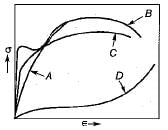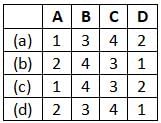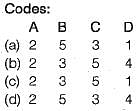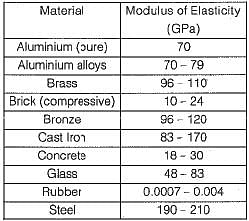Test: Mechanical Properties of Materials - 1 - Mechanical Engineering MCQ
10 Questions MCQ Test Mechanical Engineering SSC JE (Technical) - Test: Mechanical Properties of Materials - 1
Consider the following stress-strain diagram and match the following:
List - I

List - II
1. Hard rubber
2. Soft rubber
3. Structural steel
4. Aluminium alloy
Codes:

List - I

List - II
1. Hard rubber
2. Soft rubber
3. Structural steel
4. Aluminium alloy
Codes:

| 1 Crore+ students have signed up on EduRev. Have you? Download the App |
Young's modulus is defined as the ratio of
Match List-I (Material) with List-ll (Young’s modulus):



The permanent mode of deformation of a material known as ____________
A thin mid steel wire is loaded by adding loads in equal increments till it breaks. The extensions noted with increasing loads will behave as under
Match List-1 (Materia!) with List-ll (Poisson’s Ratio)


In a tensile testing experiment on a specimen of 1 cm2 area, the maximum load observed was 5 tonnes and neck area 0.25 cm2. The ultimate tensile strength of specimen is
The ability of a material to resist plastic deformation known as _____________
Resilience of a material is considered when it is subjected to
|
5 videos|103 docs|59 tests
|
|
5 videos|103 docs|59 tests
|




















